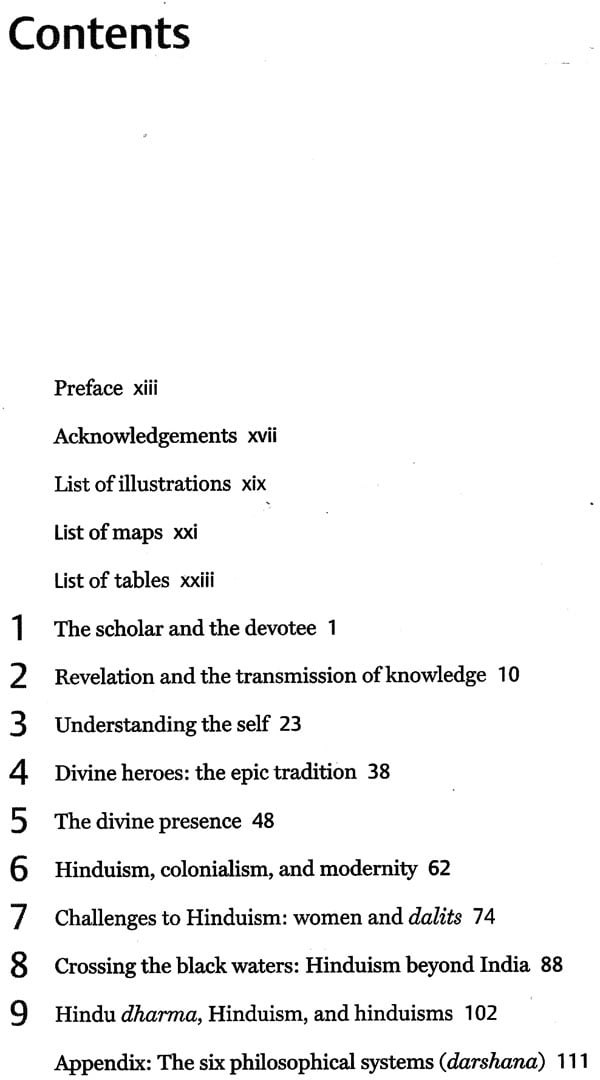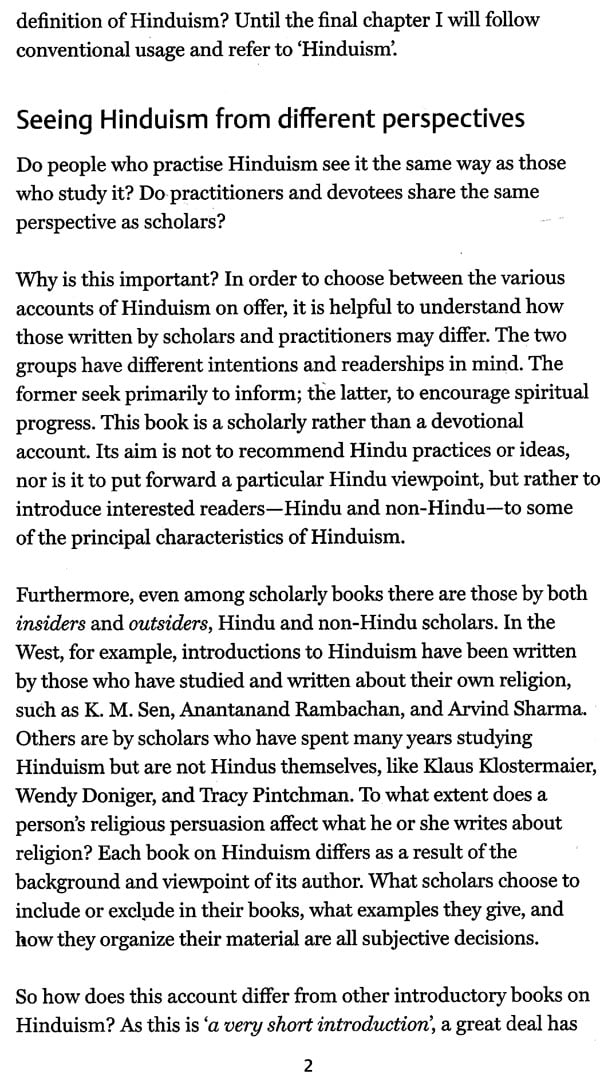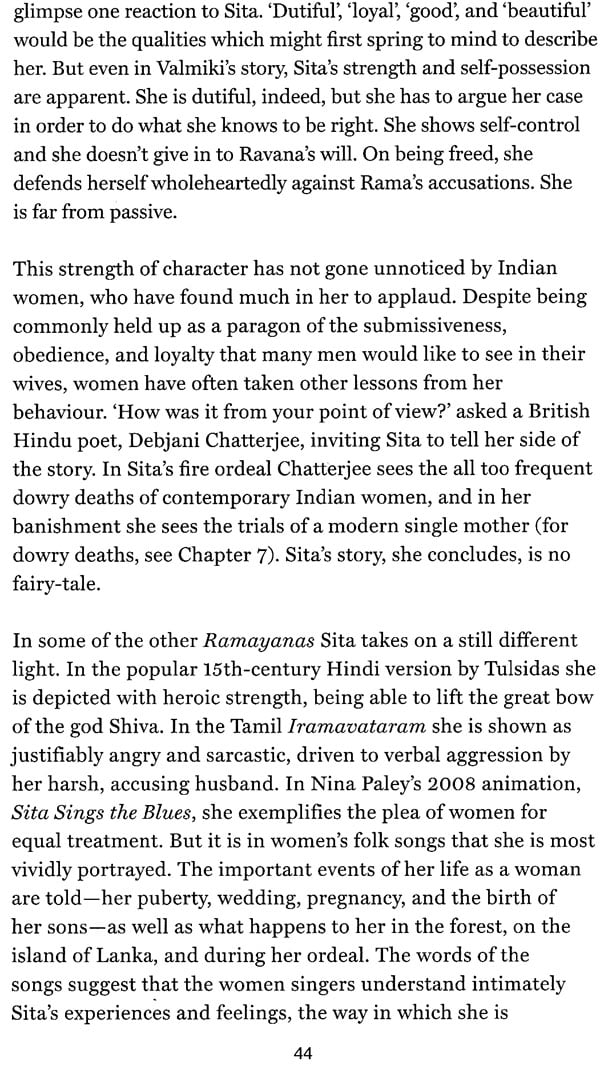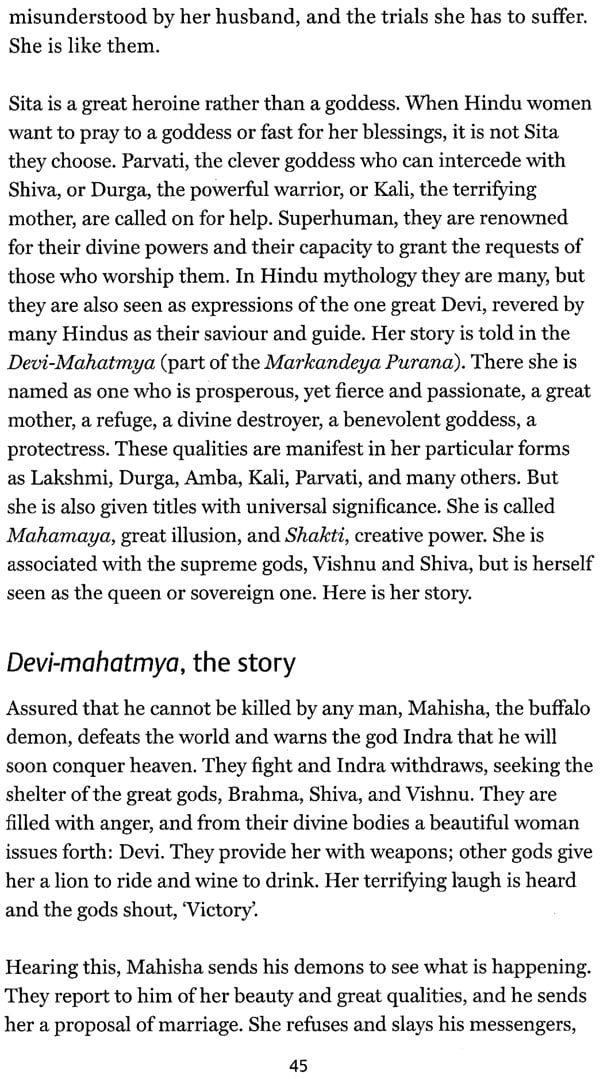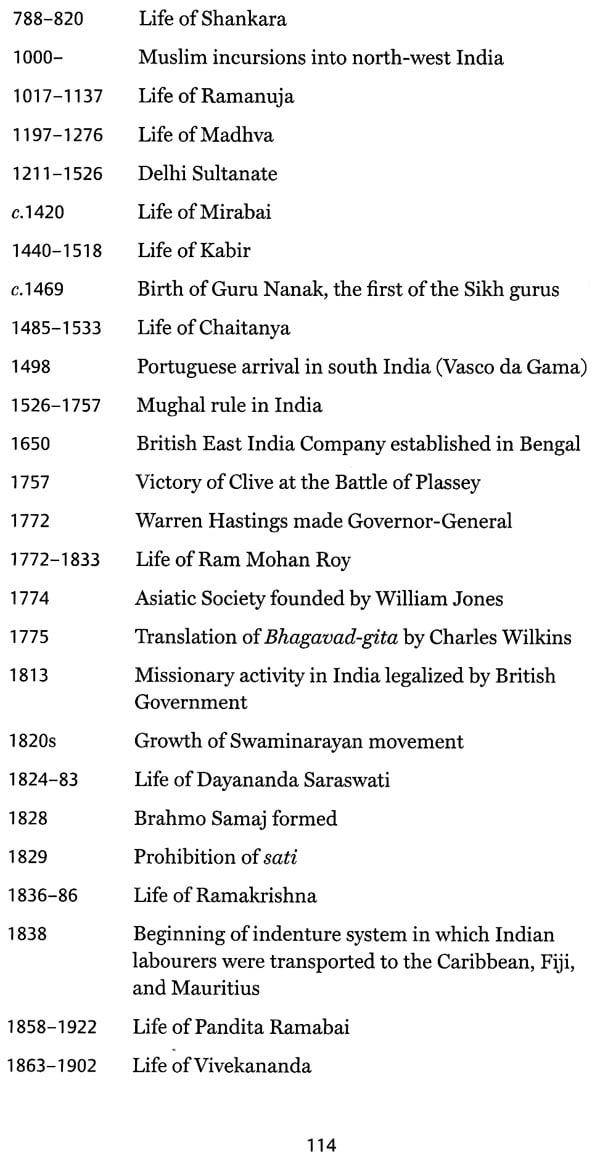
Hinduism- A Very Short Introduction
Book Specification
| Item Code: | NAV403 |
| Author: | Kim Knott |
| Language: | English |
| Edition: | 2016 |
| ISBN: | 9780198745549 |
| Pages: | 172 |
| Cover: | PAPERBACK |
| Other Details | 7.00 X 4.50 inch |
| Weight | 140 gm |
Book Description
Hindu gods and goddesses are everywhere in India, hidden within gorgeous temples and small wayside shrines, depicted in intricate stone carvings, looking out benevolently from advertisements, calendar prints, and film posters, and captured on market stalls and in shop windows in jewellery and small sculptures. They are woven into the fabric of life in Indian villages and cities, and are now also to be found in Hindu communities from the Caribbean to North America and Europe, from South Africa to Thailand. They are much loved by all. The many places in which they appear and the multitude of forms they take indicate the diversity and richness of Hindu culture.
But Hinduism extends beyond culture into other spheres—into the social structure and social life of Hindus, ethical issues, and the politics of equality and nationalism. Contemporary Hinduism and its traditional stories, teachings, and rituals affect so many aspects of the lives of Indians in and beyond the subcontinent that we begin to wonder how to define it. Is it appropriate to call it 'a religion'? Is it like Christianity or Islam? In what ways does it differ? Does it, in fact, challenge our notions of what a religion is?
This introduction to Hinduism begins by raising the question of how different starting points influence the way Hinduism is perceived and understood: how far do the motives and conclusions of Hindu devotees and scholars of Hinduism differ? In the following chapters, the importance to Hindus of early traditions contained in the scriptures, and their subsequent transmission from generation to generation by priests, gurus, and storytellers is considered. An important question discussed and handed down by Hindus over many centuries has been 'Who am I?' or, to put it another way, 'What is the self?' Philosophers have discussed the nature of the self, its relationship to God and the world, whether it continues after death, and how it is affected by human actions. These are still valid issues, as shown in Chapter 3.
Hindu gods and goddesses, including Rama, Sita, Durga, Ganesha, Vishnu, Shiva, and Krishna, the stories told about them, their representation in sculpture and pictures, and their worship are all examined in Chapters 4 and 5. How do Hindus understand the divine in its many forms? Do they worship many gods at the same time, or are these all manifestations of a single divine being? Is there is some truth in both these ideas?
In the 17th and 18th centuries, when Eurcopeans first came into contact with Hindu ideas about the divine, and with Hindu rituals and social life, they were puzzled and shocked. They saw it all through the lens of their own religion and culture, and compared it with their own experience, often drawing unfavourable conclusions. Chapter 6 opens with the relationship of European and American outsiders to Hinduism, and then considers the impact of British colonialism on religious developments in India in recent centuries. Chapter 7 turns to the views of Hindu women and untouchables, dalits as they are now known, and considers their changing place within Hinduism.
Challenging questions about who is or is not a Hindu are also raised by Indians who have crossed 'the black waters' and moved beyond the sacred territory of India. Yet, in Indian communities worldwide, temples have been established, Hindu movements have spread, and Hindu ideas and rituals have been transmitted. The spiritual side of Hinduism has appealed to non-Hindus too, raising the question of whether Hinduism remains a religion solely for those born into Indian families and Hindu castes, or whether it is now a missionary religion.
These and other questions about the identity of Hinduism are discussed in Chapter 9. Is it one religion or many different religions each defined by region, caste, and sect? Is it a religion at all? Does it challenge the very idea of religion? Whilst it is impossible to answer these questions fully, opening them up for discussion reveals the extraordinary complexity, diversity, and dynamism of all that we call 'Hinduism'.
**Contents and Sample Pages**
